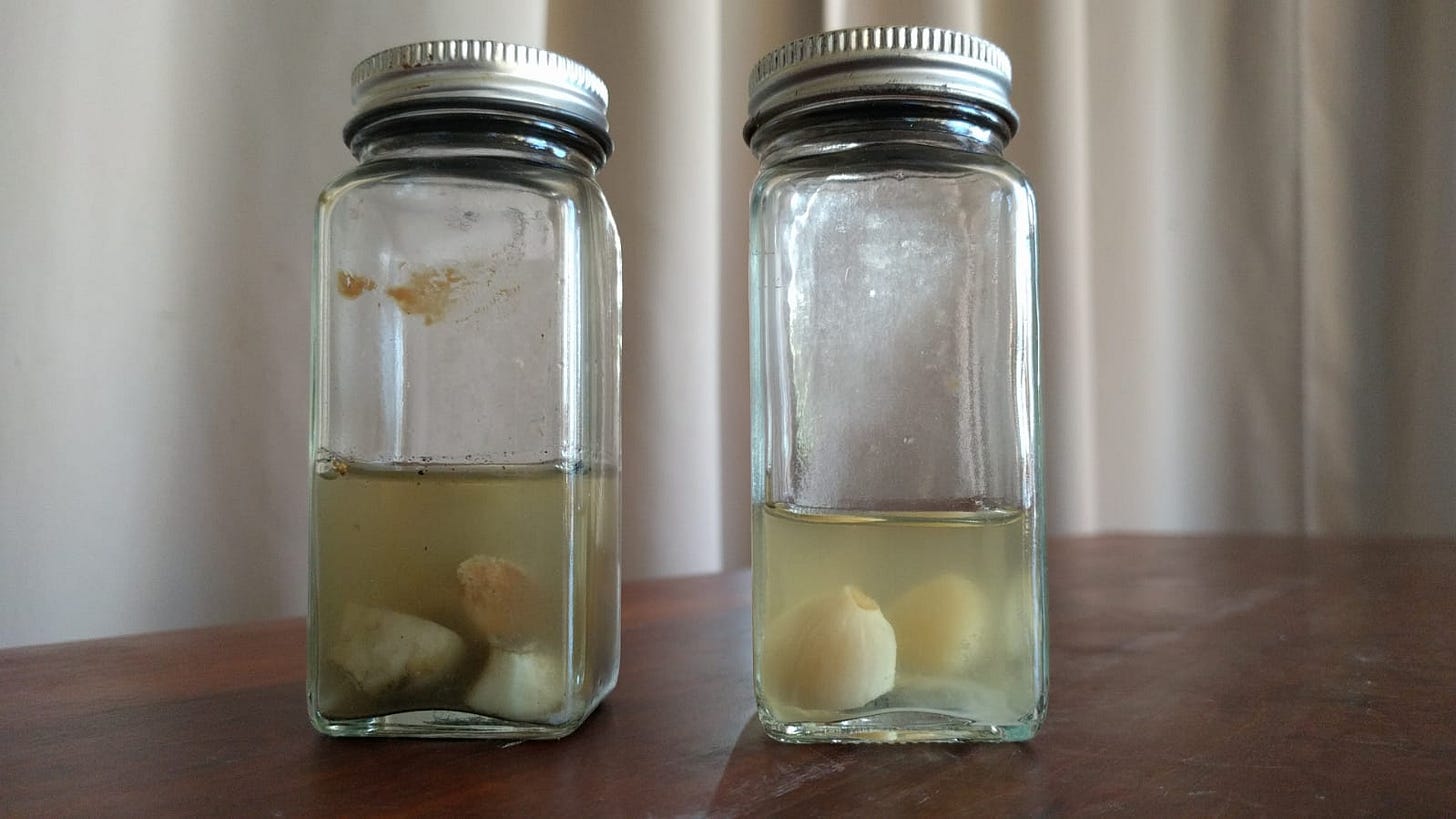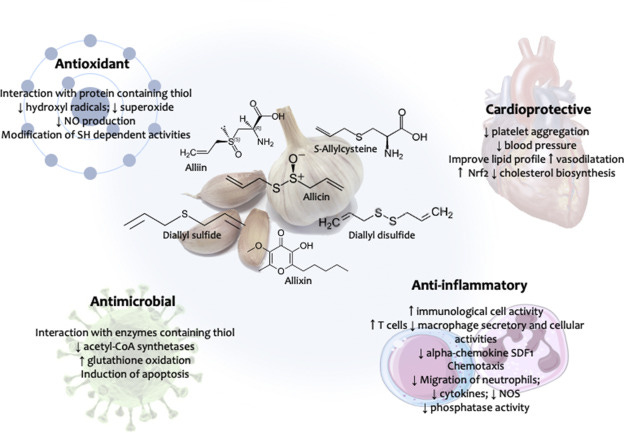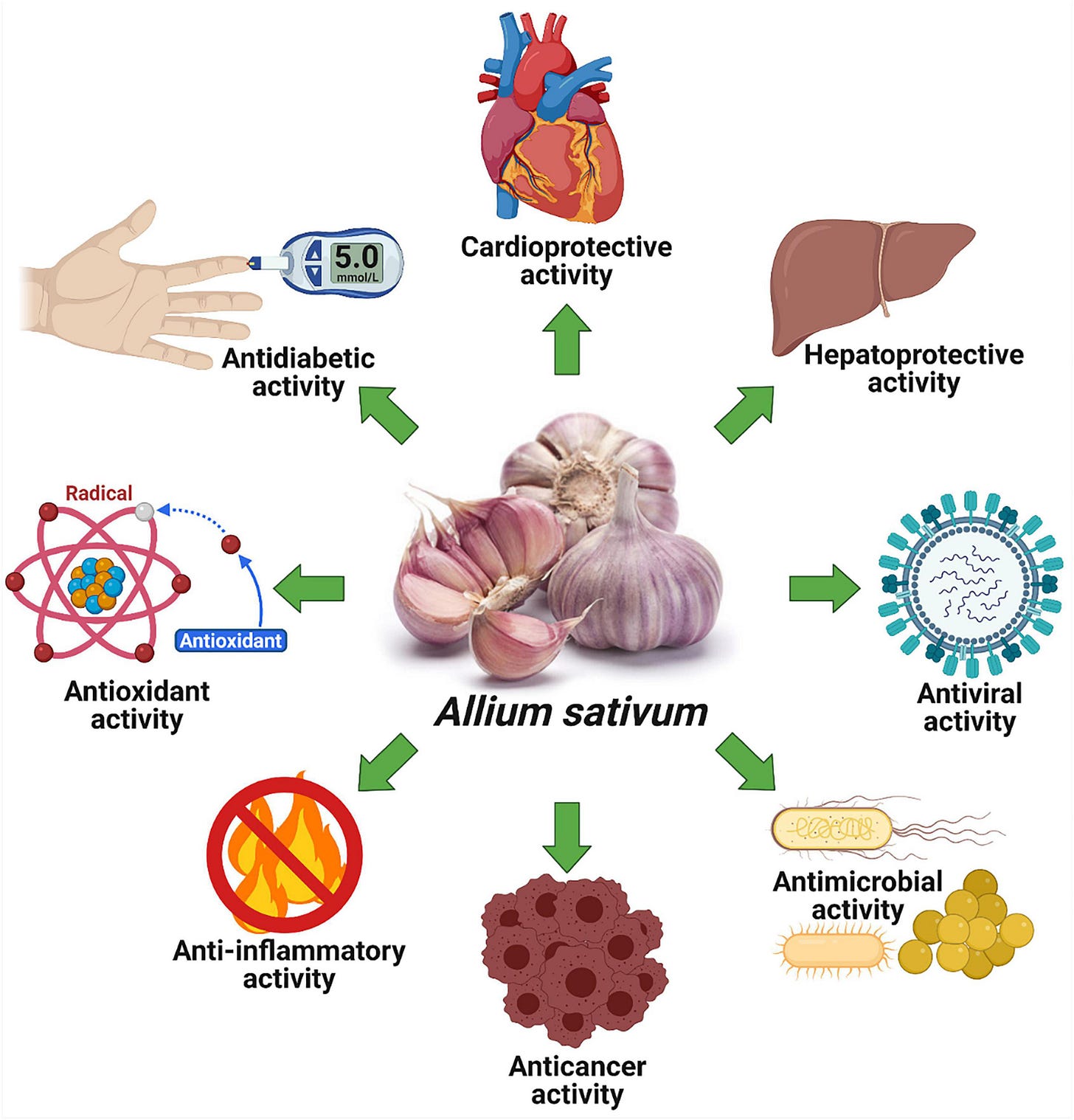Learn these Facts before Using Garlic as a Magic Food
Why is good garlic so costly and imported garlic so cheap?
“But for its unpleasant odor, garlic would be costlier than gold!” - Charaka Samhita, the ancient Sanskrit text of Ayurveda
But the Ayurvedic text references “good” garlic like those shown in the picture here, our fresh-harvested garlic being cured/dried. All of our garlic is hand-picked and grown chemical-free using organic regenerative methods. But did you know many of the cheap garlics you buy in the stores are bleached & fumigated with chemicals? Do you also know who should avoid garlic? The following article summarizes some important facts and caveats about garlic.
The Benefits and History of Garlic
Garlic has long been revered for its diaphoretic, expectorant, antispasmodic, antiseptic, bacteriostatic/antibiotic, antiviral, antihelminthic and hypotensive effects as evidenced by ancient writings from Egypt, Greece, China, Iran (Persia) and India extolling its merits. According to the Bible, the Jewish slaves in Egypt were fed garlic and other allium vegetables, apparently to give them strength and increase their productivity, as it was believed to do for the indigenous Egyptian citizens. Historically, people doing hard labor outdoors were advised to consume garlic to prevent heat stroke and high blood pressure. There is also evidence that during the earliest Olympics, which originated in Greece, garlic was fed to the athletes before they competed.
Garlic is observed to have a diuretic effect. It is possible that the mobilization of fluid from the extravascular space may have been due to improved cardiovascular function resulting from garlic treatment. It is now well recognized that garlic, appropriately used, will reduce blood pressure, improve elevated serum cholesterol, decrease platelet aggregation, and protect vascular endothelial cells from damage by LDL cholesterol; all of these effects are of potential cardiac benefit.
Although some Indian Brahmins and yoga practitioners avoid garlic because of its aphrodisiac properties increasing sexual desire (improve blood flow)1, ancient Sanskrit texts of Ayurveda, such as Charaka Samhita, recommend garlic for the treatment of heart disease and arthritis. In another ancient medical text, known as the Bower manuscript (named after its discoverer, Hamilton Bower), garlic was used for fatigue, parasites, digestive diseases and leprosy and hence called the “Universal Remedy.”
In 1858, Louis Pasteur (the father of germ theory) discovered that garlic killed bacteria and it was effective even against some bacteria resistant to other factors. He also noted that garlic killed Helicobacter pylori (responsible for stomach ulcers). Garlic was also famously used in the treatment of German soldiers during World War I, and although penicillin was already in use by the second World War, the Russian Red Army continued using garlic and it was apparently renamed there as “Russian penicillin” or just “natural antibiotic.”
Garlic is commonly used to treat chronic bronchitis and other upper respiratory tract infections and influenzas. Evidence supports the protective effects of garlic in stomach, colorectal, breast cancer in humans, possibly related to the presence of organosulfur compounds, predominantly allyl derivatives, which also have been shown to inhibit carcinogenesis in forestomach, esophagus, colon, mammary gland and lung of experimental animals. Garlic is believed to induce cancer cell death by apoptosis, autophagy, or necrosis. Besides organosulfur compounds, garlic is rich in trace elements (zinc, magnesium, copper, selenium, and iodine), protein content, dietary fiber, vitamins, ascorbic acid, and polyphenols.
Why is Good Garlic Expensive? and Cheap Garlic Bleached?
Chemical-free locally farm-fresh garlic is expensive2 because growing quality garlic takes time and is extremely labor intensive compared to growing other crops, particularly if one is growing organic garlic. Chemical-free regenerative farmers like ours avoid using chemicals and rely on labor-intensive natural methods and do almost everything by hand, including seeding, planting, snipping the garlic scapes /flowers, weeding and using natural mulch (hay, grass clippings or straw), picking, curing and packing the garlic. When something is so fastidiously grown and cared for, you can guarantee no short cuts have been taken. No sprays, no chemicals, just fresh garlic.
Many imported (not farm-fresh) cheaper garlics3 are often sprayed with chemicals to prevent sprouting during storage and transit, and even bleached with chlorine to make it look white, and fumigated with methyl bromide, according to Henry Bell of the Australian Garlic Industry Association. High doses of methyl bromide can cause respiratory and central nervous system damage.
Thanks to non-aggressive weed control, our farm looks like a naturally created exquisite colorful tapestry and not a scorched dead patch of dirt. The image above compares our garlic patch to that of a commercial heavily sprayed mechanized monocrop patch of a “mega” farm, the kind that you most likely made the garlic you buy cheap in supermarkets or even some roadside farm markets. You can observe a qualitative differences between conventional vs. chemical-free garlic by leaving it in vinegar for at least a month:

In the picture here you can see the dark green chemicals leaching out from a vinegar-soaked conventional (sprayed and fumigated) garlic. On the right, is our chemical-free hand-cultivated garlic soaked in garlic for the same length of time. We did not dare taste the content in the left bottle but our pickled garlic on the right is extremely tasty with sone sweet aftertaste.
Toxicity or Side Effects
Although garlic is a member of the Allium genus along with onions, shallots and lilies, it is not certain whether it is toxic to dogs like onions, which can affect the hemoglobin in the dog’s blood and cause a form of anemia. But for a dog to develop the form of anemia, it is estimated that it would have to be given over 0.5% of its body weight in onions (about 100g or 3.5oz of onions daily for an average-sized dog) over a long period of time as red blood cells are constantly regenerated from the bone marrow)4.
Garlic, especially fresh garlic, might increase the risk of bleeding and low blood sugar levels so it should be avoided before invasive surgeries that involve bleeding. Also, because of its diuretic effect, garlic may not be suitable for people with low blood pressure, blood clotting issues, anemia, or low blood sugar levels (hypoglycemia).
In traditional Persian medicine practiced by the likes of Avicenna, garlic belonged to the “warm and dry” food category and would be best suited to balance people with a “cold and moist” constitution. In modern medicine, a cold constitution may correspond to low metabolic rates (hypothyroidism or low thyroid activity, as symptomized by weight gain, low metabolism, hair loss or dry hair, dry skin, etc.) and moist may refer to conditions like edema or inflammation with extracellular fluid build up (and high blood pressure). So garlic may be contraindicated (not recommended) for the minority of people who already have high metabolism or low inflammation.
Generally speaking, because of its potency, garlic like other herbs should be used regularly but in moderation to balance other food.
Conclusion
In recent times, with the advent and heavy marketing of commercial (synthetic) antibiotics and blood pressure medications, garlic has been slowly sidelined as the “Universal Remedy” recommended by the Bower manuscript. Derogatory terms like “garlic-eater” are used in reference to people who generously use garlic in their food such as Jews and Italians5.
The wise, however, would pay attention to Charaka Samhita, the ancient Sanskrit text of Ayurveda “But for its unpleasant odor, garlic would be costlier than gold!” and spend a few extra dollars in buying good farm-fresh organic or chemical-free garlic from local sources and make it a staple in their weekly food preparation (unless they belong to the minority mentioned above). Spending $15-$20 a month on a pound of good garlic is probably one of the best health investments a family can make (if they can find local sources of organic or chemical-free garlic). Another option is to grow your own garlic if you have the time, interest and good soil.
A new meme for garlic is ‘vegetable Viagra!’
Currently up to $30 a pound in fancier supermarket or online stores, or $12-$15 a pound from local farm stands and small farmers like us.
For example from China
The plants that cause most poisoning cases in dogs and cats, including fatalities, and often when only relatively small amounts are eaten are lilies, cannabis and daffodils and of course grapes and raisins which are extremely toxic but classified as foods rather than plants.
Mr. Potter called the poor Italian family “garlic eaters” as a derogatory remark in the classic motion picture “It’s a Wonderful Life!”





